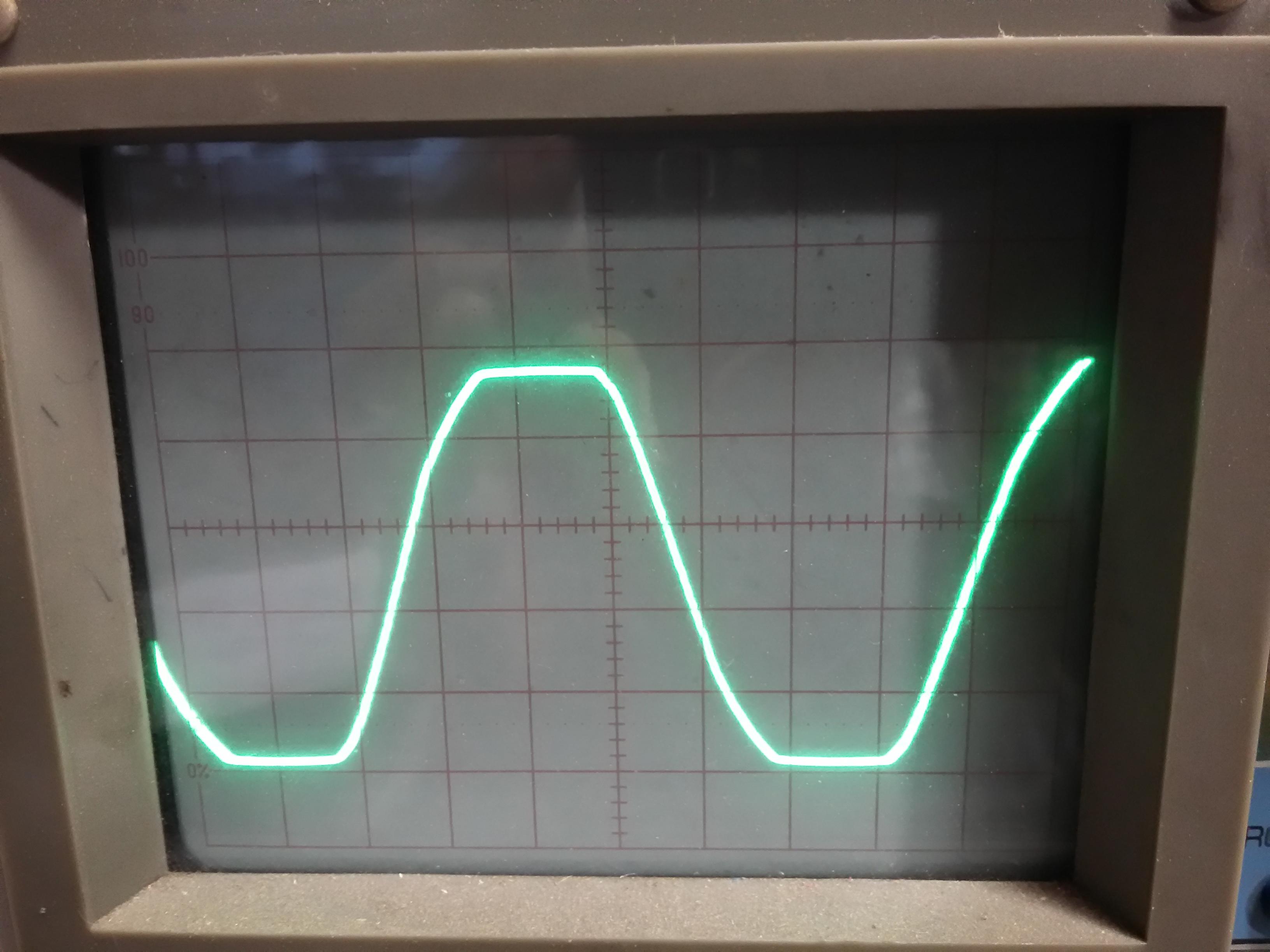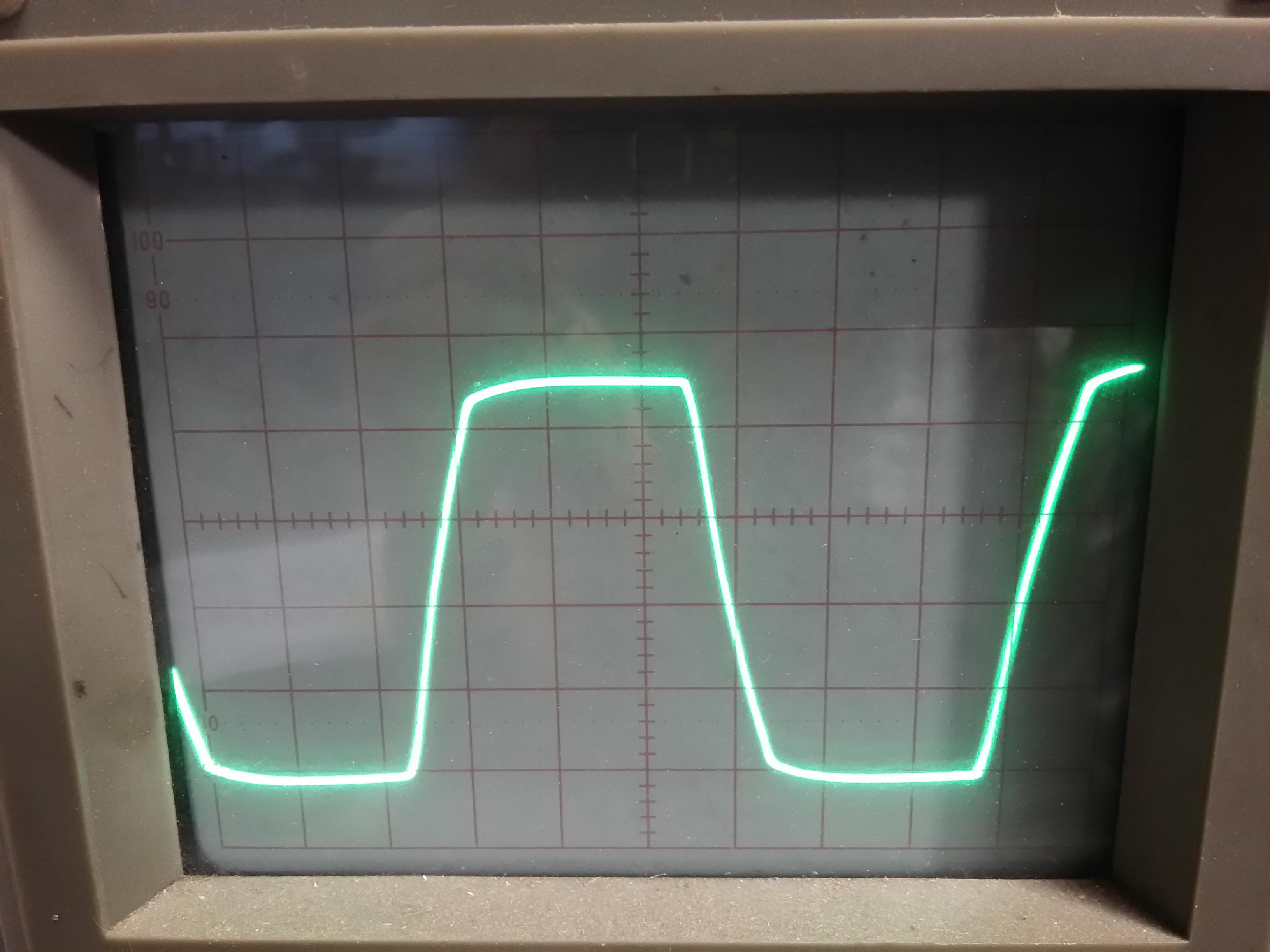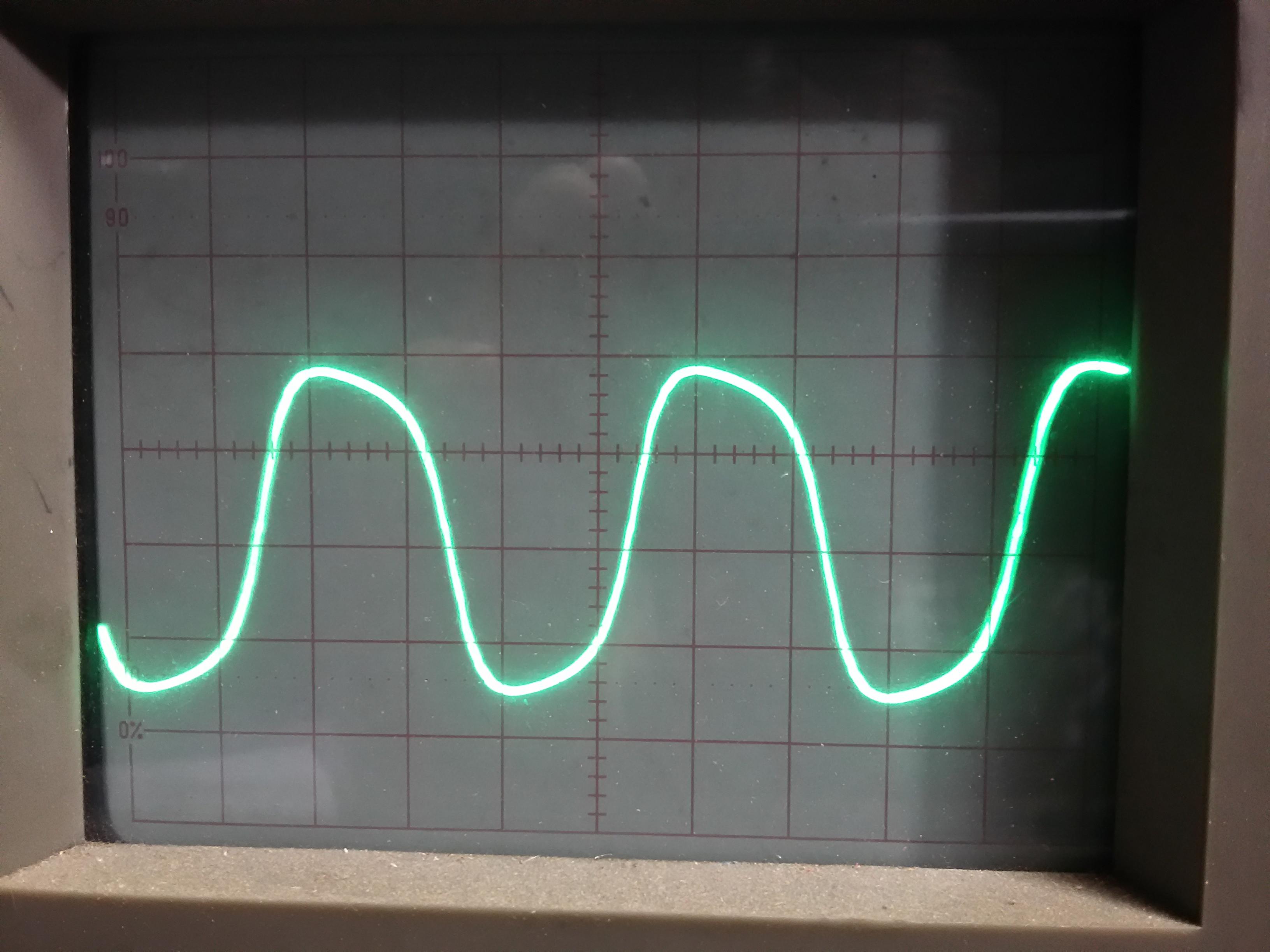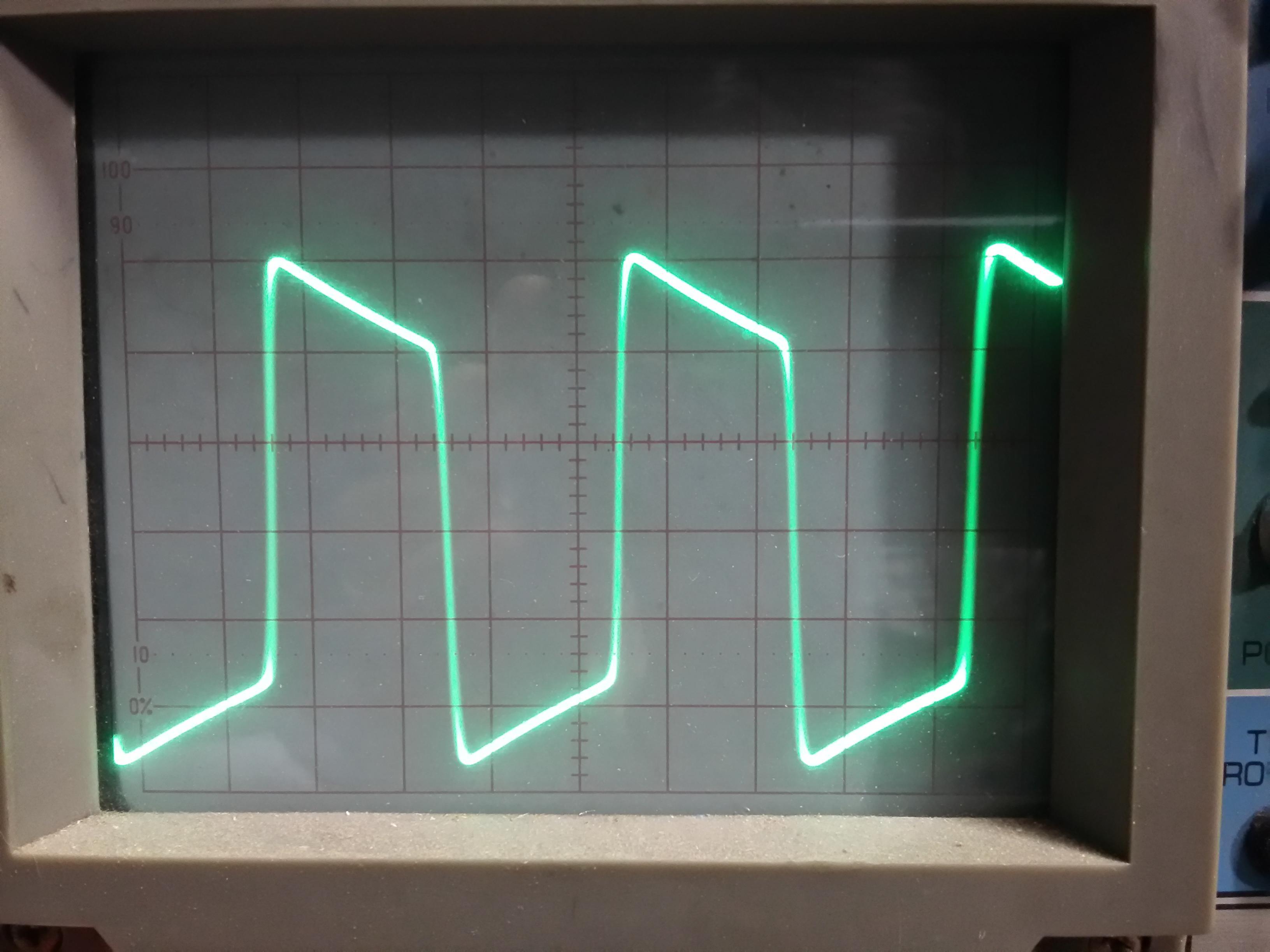Teemuk - I'm missing something. You stated:
"The underlying idea is that all waveforms, except sinusoidal, are made out of multiple frequency components. If magnitude of these components changes it must also change the waveform's shape."
I agree with the above, but my scope shots are of a sine wave (one frequency), and it's amplitude simply being clipped. There are no other frequencies involved to affect the shape.
Also: "The high frequency components of the square wave...."
The square wave from my signal generator does )or better not) contain any high frequency components...
I look at one frequency on my scope, amplitude vs time. What kind of waveforms are A-J? I run my sig-gen sine wave thru a hi-filter, run the frequency up, and see only the amplitude decrease with frequency, but remain a sine wave.... what am I missing?
I will try running a square wave thru my amp, and look at the tone stack's effect on it. Never done that before. Thanks!
"The underlying idea is that all waveforms, except sinusoidal, are made out of multiple frequency components. If magnitude of these components changes it must also change the waveform's shape."
I agree with the above, but my scope shots are of a sine wave (one frequency), and it's amplitude simply being clipped. There are no other frequencies involved to affect the shape.
Also: "The high frequency components of the square wave...."
The square wave from my signal generator does )or better not) contain any high frequency components...
I look at one frequency on my scope, amplitude vs time. What kind of waveforms are A-J? I run my sig-gen sine wave thru a hi-filter, run the frequency up, and see only the amplitude decrease with frequency, but remain a sine wave.... what am I missing?
I will try running a square wave thru my amp, and look at the tone stack's effect on it. Never done that before. Thanks!
A clipped sine is no longer a pure sine, but now contains harmonics.
Symmetrical clipping, sounds more and more like a square wave.
A square wave is built of the fundamental frequency and all the odd
integer harmonies, rolling off at -6db per octave.
A saw wave contains all contains all integer harmonies, odd and even.
Rolling off at -6dB per octave.
A saw wave of double frequency contains only even harmonies, but is
missing the fundamental wave... Again, rolling off at -6dB per octave.
Pulse of extremely narrow duty contains all harmonies. Same as a saw,
but all interger harmonies of approximately equal amplitude. If the pulse
were created infinitely narrow, there theoretically would be no roll-off...
You can put these through filters that shift the phases and attenuate
some of the amplitudes. Make the shape look quite different, but still
contain the same integer harmonics.
A triangle wave, for example, contains same odd harmonies as a square.
But rolling off at -12dB per octave, and the phasing is different. Through
the right filter, a squarewave could become a triangle. Or crank a pulse
through a filter, might become a saw. In a filter, like a tone control, new
harmonies are not created. But they do shift phase, change amplitude,
and lose alignment in time.
It is when two non-harmonically related sines intemodulate each other
that we get sidebands that are not simple harmonies. You can play all
six strings of a guitar simultaneously through the same distortion, and
the chord is not unrecognizably destroyed. But sing and play guitar and
drums simultaneously through any intermodulating distortion, does not
always end well.
Symmetrical clipping, sounds more and more like a square wave.
A square wave is built of the fundamental frequency and all the odd
integer harmonies, rolling off at -6db per octave.
A saw wave contains all contains all integer harmonies, odd and even.
Rolling off at -6dB per octave.
A saw wave of double frequency contains only even harmonies, but is
missing the fundamental wave... Again, rolling off at -6dB per octave.
Pulse of extremely narrow duty contains all harmonies. Same as a saw,
but all interger harmonies of approximately equal amplitude. If the pulse
were created infinitely narrow, there theoretically would be no roll-off...
You can put these through filters that shift the phases and attenuate
some of the amplitudes. Make the shape look quite different, but still
contain the same integer harmonics.
A triangle wave, for example, contains same odd harmonies as a square.
But rolling off at -12dB per octave, and the phasing is different. Through
the right filter, a squarewave could become a triangle. Or crank a pulse
through a filter, might become a saw. In a filter, like a tone control, new
harmonies are not created. But they do shift phase, change amplitude,
and lose alignment in time.
It is when two non-harmonically related sines intemodulate each other
that we get sidebands that are not simple harmonies. You can play all
six strings of a guitar simultaneously through the same distortion, and
the chord is not unrecognizably destroyed. But sing and play guitar and
drums simultaneously through any intermodulating distortion, does not
always end well.
Last edited:
Teemuk is right, let me show you why 🙂Teemuk - I'm missing something. You stated:
"The underlying idea is that all waveforms, except sinusoidal, are made out of multiple frequency components. If magnitude of these components changes it must also change the waveform's shape."
I agree with the above, but my scope shots are of a sine wave (one frequency), and it's amplitude simply being clipped. There are no other frequencies involved to affect the shape.
Just talking about your screenshots, none of them shows a sinewave 😱
1) this one is already rounding top and bottom, so "not a sinewave any more"

Compare to a pure sinewave, which as you see is "slimmer"
An externally hosted image should be here but it was not working when we last tested it.
2) this one is already clipping, has different waveshape/waveform (pick one) and so it contains other frequencies mixed with the original sinewave.

Maybe you think : "hey, but my generator is still set to 500Hz, image is the same width, etc." .
True but by having a shape different to a pure sinewave, whether it's slightly rounded, squared, clipped, has peaks, *any* difference means it also contains other frequencies.
It's a Law of Nature, not somebody's "opinion" , and has been studied and confirmed for a long time.
Fourier gave it a Math form, but even without getting knee deep (or neck deep) in the quicksand, what's important is to grab the concept: "different shape=contains harmonics" .... period 🙂
3) this one is more clipped, has stronger harmonics, or multiples of original frequency.

If original sine is 500Hz , harmonics will be odd and even multiples of 500Hz, which will be stronger and stronger every time I increase distortion.
4) this one is already distorted, see it's not a sinewave any more

varying EQ does not really "make it more distorted" but "increases percentage of harmonics" so they will be more important than before, and change shape even more.
Level also increased so you applied some kind of boost.

Oh yes it does.Also: "The high frequency components of the square wave...."
The square wave from my signal generator does )or better not) contain any high frequency components...
If it's not a pure sinewave it *does* contain higher frequency components.
Please let me alter the order of your questions, because you are referring to different things:
You are seeing it but not "seeing" it 😀I look at one frequency on my scope, amplitude vs time. ...... I run my sig-gen sine wave thru a hi-filter, run the frequency up, and see only the amplitude decrease with frequency, but remain a sine wave.... what am I missing?
Since the pure sinewave has not extra harmonics, EQing it will only change amplitude, but not shape.
To clearly show effects of EQ on waveshape, Teemuk *started* withn a squarewave, as "distorted" as can be, and then applied different EQs, which are explained in the image.What kind of waveforms are A-J?
Please do 🙂I will try running a square wave thru my amp, and look at the tone stack's effect on it. Never done that before. Thanks!
You'll be able to reproduce all of Teemuk's images, although for a couple you'll need to insert a Graphic EQ , regular tone controls are far too "wide" and not too selective.
- Status
- Not open for further replies.